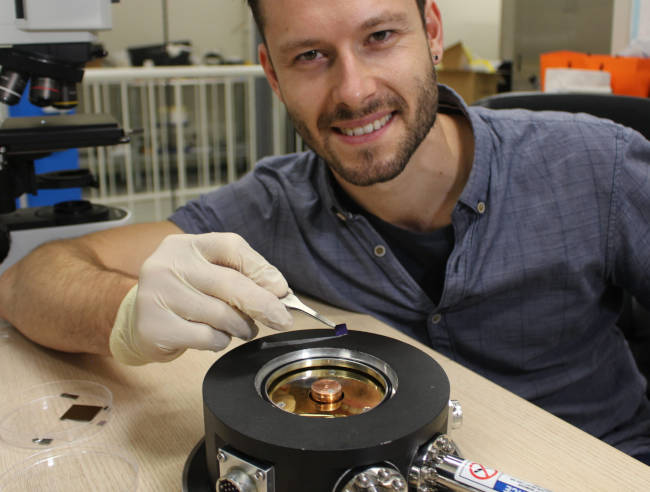
The exciton polariton is a hybrid particle composed of an exciton, formed from a bound electron-hole pair, and a photon. They are “a promising platform for future ultra-low energy electronics, because they can flow without any wasted dissipation of energy [heat] in a fully coherent quantum state”, according to the university.
2D semiconductors show promise as substrates for such electronics because excitons are stable in them at room temperature.
“However, this dissipationless transport requires a phase transition to a macroscopically coherent quantum state, which only occurs at very large particle densities that are hard to access in 2D semiconductors,” said ANU professor Elena Ostrovskaya. “The new technique allows ANU researchers to create high polariton densities in an engineered quantum box.”
In detail, the electron-hole pair can be bound in a direct bandgap semiconductor, where a photo-excited electron in the conduction band binds to an electron-vacancy in the valence band. Mixing this with light to form an exciton-polariton can be done in a suitable 2D semiconductor confined inside a micro-cavity formed of two mirrors separated by a few hundred nanometers, said the university.
But the exciton polaritons will not naturally clump in sufficient density to form the desired runny quantum state, which is a Bose-Einstein concentrate (BEC).
What is needed is a potential well in the 2D material in which exciton-polaritons can be mass-produced and trapped, and that is what the ANU researchers have made, using the ‘sticky tape’ method pioneered by graphene researchers Geim and Novoselov.
Starting with a wide monolayer of WS2, they stacked onto that a thin flake of Ga2O3 glass, and on to that a smaller (smaller than the particle wavelength of an exciton-polariton) flake of 2D WS2 – all of which was put inside the mirrored cavity.
The tiny WS2 flake becomes the potential well, as within its boundaries there is stronger coupling of the exciton to light, which robs polaritons of potential energy, so that they don’t have enough energy to escape.
As an aside, the team also found that exciton-polaritons made near the well would travel over and fall in. “We have been able to demonstrate that polaritons which form anywhere outside the quantum box can travel for many micrometres and be trapped and accumulate inside the box”, said lead researcher Matthias Wurdack (pictured), also of ANU.
Comparing polariton characteristics inside and outside the well indicated that trapping leads to energy redistribution towards lower energy states, “signalling an advance towards the desired quantum states of BEC and super-fluidity”, according to ANU. “Additionally, the researchers found that trapping significantly enhances the macroscopic coherence of the polaritons, even before the BEC phase is reached.”
The work was done under the umbrella of the ARC Centre of Excellence in Future Low-Energy Electronics Technologies, and Australian National University worked with Carl von Ossietzky Universität in Germany. It is published as ‘Enhancing ground-state population and macroscopic coherence of room-temperature WS2 polaritons through engineered confinement‘ in Physical Review Letters.
Contact Dr Matthias Wurdack (Australian National University) matthias.wurdack@anu.ed.au
Contact Prof Elena Ostrovskaya (Australian National University) elena.ostrovskaya@anu.edu.au
** images from Physical Review Letters
abstract







